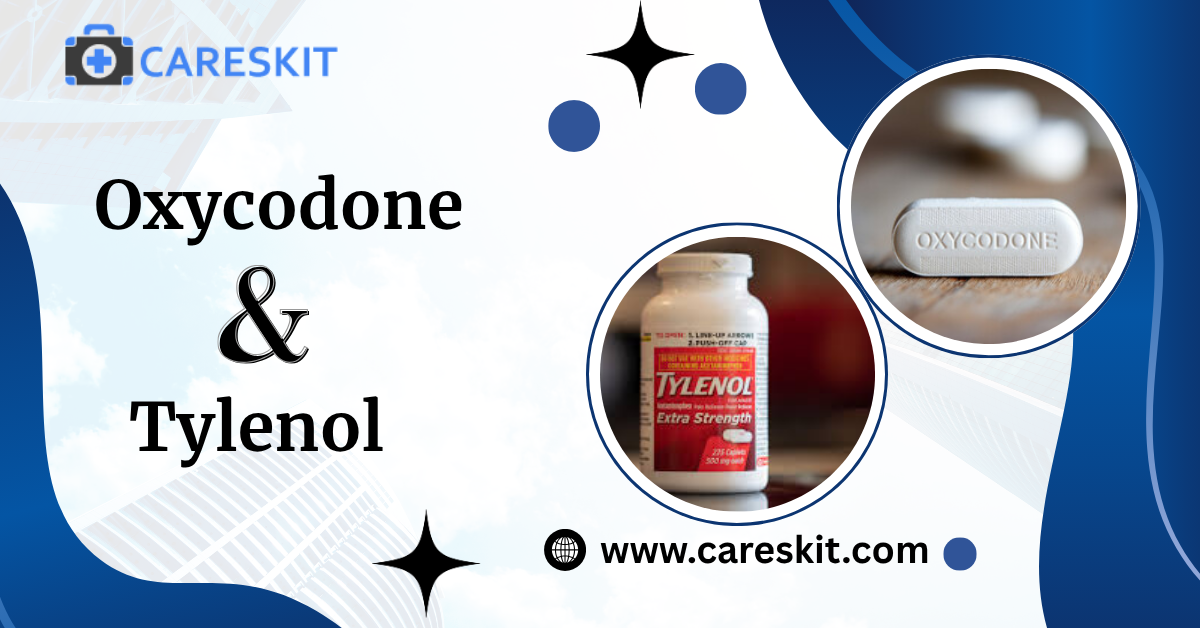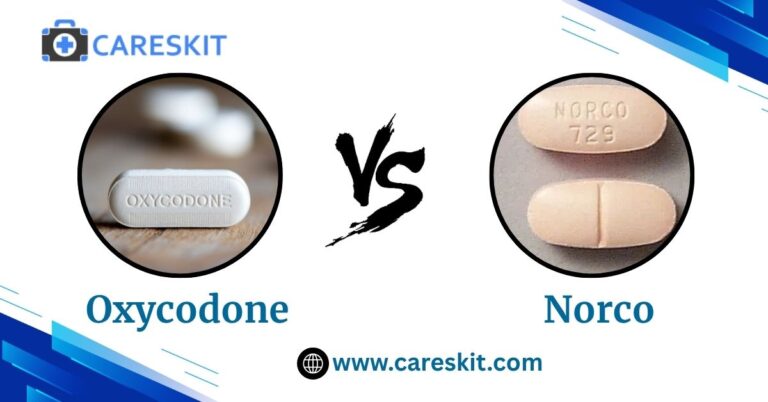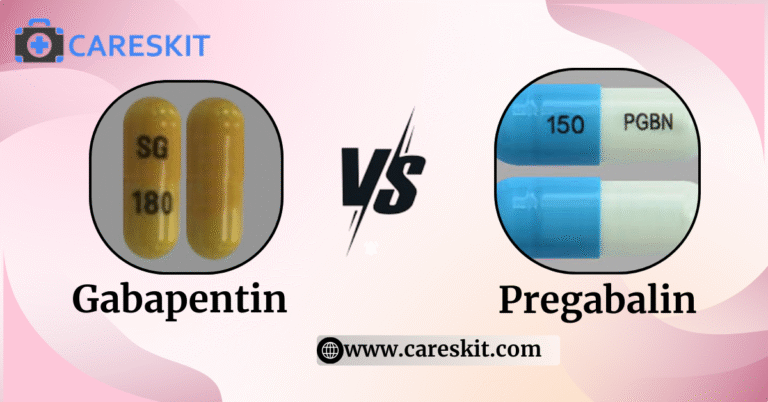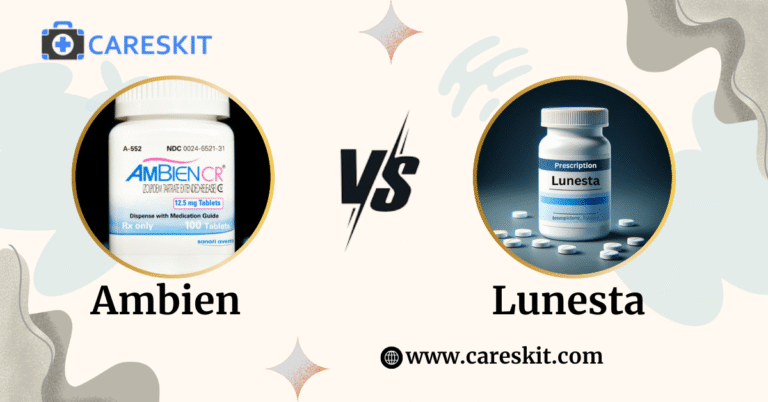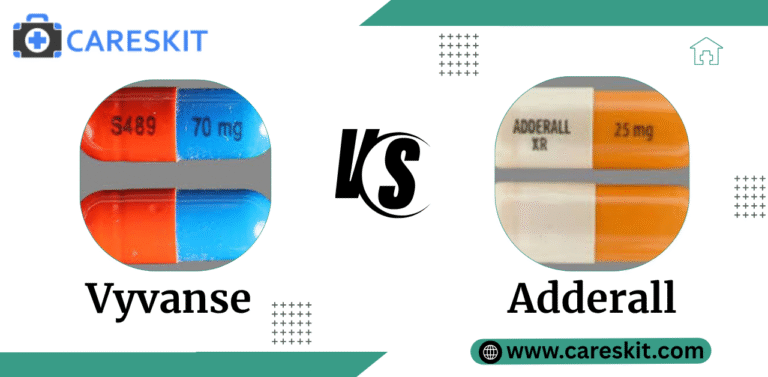Oxycodone and Tylenol: Addiction Risk and Safer Alternatives
Oxycodone and Tylenol are two most useful painkiller prescription medications used to relieve acute to chronic pain. In today’s time this kind of pain is very common in day to day life of every person and these pain are extremely harmful to the human body and can produce many side effects. It will be helpful in making decisions for safe and effective pain relief if you know the difference between Oxycodone and Tylenol. But they vary greatly in strengths, potential for abuse, and dependency. So always consult your healthcare provider before starting or switching to this type of medication.
In this blog, we will discuss Oxycodone and Tylenol according to their side effects, working principles, and safety. And also covers drug interactions, Oxycodone and Tylenol together and which is stronger, Oxycodone or Tylenol? This guide helps you choose which medication is right for your health.
What are Oxycodone and Tylenol?
Oxycodone is a powerful opioid pain reliever medication primarily used to manage moderate to serious pain in opioid patients. It starts their work by affecting the CNS depressants and the brain to reduce pain levels in the human body. Most of the healthcare providers prescribed it for surgery, injury, and cancer-related pain. Before taking these medications try to know their effectiveness, various doses, and side effects and discuss with your healthcare provider which medications are right for your health.
Most of the doctors prescribed Tylenol to manage back pain, tooth pain, fever, muscle pain, and headache and it is generally considered safe and effective when used at the recommended dosage but taking too much can lead to serious liver damage. Due to their effectiveness profile it shows some common and serious side effects.
Brand Names & Alternatives
Brand names and alternatives are helpful for both patients and doctors for choosing appropriate dosage for pain relief. Both medications come in different brand names to know these medications easily. If severe pains are not controlled then other alternatives are prescribed to manage pain.
Different brand names for Oxycodone and Tylenol are:
- OxyContin
- Roxicodone
- Oxaydo
- Percocet
- Feverall
Various alternatives for both medications are:
- Hydrocodone
- Morphine
- Dilaudid
- Tramadol
- Gabapentin
- Ibuprofen
- Naproxen
Why Combine Oxycodone and Tylenol?
Using Oxy with Tylenol together provides pain relief in two different ways. Oxycodone is a powerful pain relief medication that changes the way the brain feels pain, and Tylenol is a pain and fever-reducing drug that blocks some chemical signals in the body.
When used together, as in the commonly prescribed combination drug Percocet-they provide effective pain control, meaning lower doses of each can be used to achieve effective pain relief.
Benefits of combining these medications:
- More powerful pain control than either drug alone
- Lower doses of each drug are needed
- Reduces dependency risk compared to higher opioid-only doses
Combining Oxycodone With Tylenol
The combination of Oxycodone and Tylenol together can be effective to manage moderate to severe pain and it can be done under your healthcare provider. Some prescription drugs already have both of these ingredients in one tablet. But be sure to keep an eye on the maximum daily dose of Tylenol to prevent liver injury, and to avoid combining Oxycodone with alcohol or other substances due to extremely serious side effects.
Is Oxycodone or Tylenol Best for Surgery?
Effective pain relief after surgery must be relied upon, if for no other reason than to facilitate a smooth recovery process. Oxycodone and Tylenol are prescribed by many Healthcare professionals to alleviate post-operative pain. Both drugs can attack pain from various pathways:
- Oxycodone is a potent opioid frequently administered following major operations like joint replacements, abdominal surgery, or trauma operations. It is effective in the brain to suppress pain messages, hence being very good at managing moderate to severe pain.
- Tylenol is a powerful pain reliever drug used to manage chronic pain conditions. It does not reduce inflammation but is effective for mild to moderate pain where other medications are not effective. It is generally safe and well tolerated in most patients, even those who have minor surgery or have teeth extracted.
Drug Interactions
Oxycodone and Tylenol can be safely used together under a certified healthcare provider but they have important drug interaction profiles that should not be overlooked.
Different drug interactions with Oxycodone:
Different drug interactions with Tylenol:
- Warfarin
- Liver-Enzyme Inducers
- Alcohol
- Metoclopramide
- Herbs & Supplements
Side Effects Of Oxycodone and Tylenol
Oxycodone and Tylenol are commonly used painkillers to relieve pain from serious pain conditions but they come with different side effect profiles due to how they work in the body.
Common side effects of Oxycodone are:
- Drowsiness
- Nausea
- Constipation
- Dizziness
- Allergic reaction
Common side effects of Tylenol are:
- Generally well tolerated at recommended doses
- Allergic reactions
- Liver damage with overdose
- Nausea
Side Effects of Taking Both Medications Together
Oxycodone and Tylenol taken together are recommended by your healthcare provider according to your health needs. These combinations are highly effective at a lower dose for managing moderate to serious pain conditions. But sometimes these medications produce potential side effects in individuals that are incurable.
Common side effects shared by both medications:
- Vomiting
- Constipation
- Headache
- Lightheadedness
Serious Side Effects shared by both medications:
- Liver Damage
- Respiratory Depression
- Addiction and Dependence
- Overdose Risk
FAQs
Can you take Tylenol with Oxycodone?
Yes, you can take Tylenol with Oxycodone under good medical supervision. This combination is commonly prescribed together at a lower dose to reduce pain. If you use these drugs properly they work effectively to provide stronger and longer-lasting pain relief.
Is Tylenol or Oxycodone better for pain?
The answers totally depend on the type of pain and the amount of pain you’re in. Both drugs are essentially distinct in their intended purpose, risks, and advantages. Tylenol is often used for light pain and fever, whereas Oxycodone is used mostly for extreme or surgical pain.
Is Oxycodone different from Tylenol?
Both Tylenol and Oxycodone are pain relievers but are quite different in their potency, their mechanism of action, and their addictiveness. Both can be combined (such as in Percocet) under a doctor’s care for increased pain relief but should be taken with caution to prevent severe side effects.
Final Word
Oxycodone and Tylenol are powerful pain relievers used to treat moderate to serious pain. It is sometimes prescribed together by a healthcare provider to reduce high levels of pain according to your health conditions. Oxycodone is highly effective as compared to Tylenol in case of serious pain conditions. Choosing which medications are appropriate for your health conditions depends on your overall health conditions, pain level, and always consult your doctor for better treatment.

